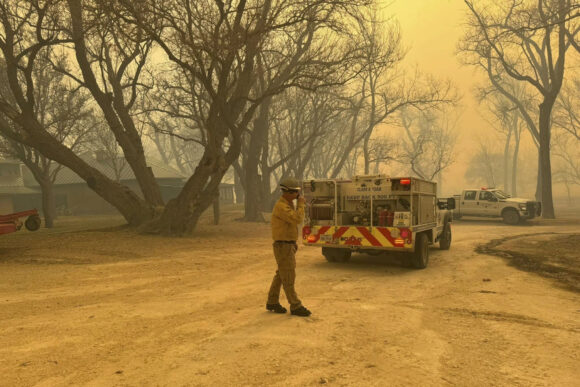The Smokehouse Creek Fire has grown to more than 1 million acres in the Texas Panhandle, making it the second-largest wildfire in state history.
The fire is 3% contained as of Thursday morning according to officials with the Texas A&M Forest Service. Texas Governor Greg Abbott has issued a disaster declaration for 60 counties.
Update: the #SmokehouseCreekFire in Hutchinson County is an estimated 1,075,000 acres and 3% contained. 1,050,000 acres have burned in Texas. The #687ReamerFire has burned into this fire. #txfire pic.twitter.com/HR0zqgX4jj
— Incident Information – Texas A&M Forest Service (@AllHazardsTFS) February 29, 2024
The American Property Casualty Insurance Association (APCIA) urges homeowners, renters, and business owners to continue following the orders of state and local officials and contact their insurance company as soon as possible to file a claim.
“Even if you are still evacuated, you can reach out to your insurer to get the claims process started,” said Lee Ann Alexander, vice president of state government relations for APCIA. “Insurers are ready to help residents impacted by the wildfires begin the recovery process and get the resources needed to take care of their immediate needs, like temporary housing.”
APCIA offers the following tips for navigating the recovery process after a wildfire:
- Contact your insurer to get the claims process started. While evacuated, contact your insurer. You do not need to wait until you return home before reaching out to your insurer. Insurers can be contacted via their toll-free number, app, or website.
- Discuss coverage for temporary housing with your insurer. If you are not able to live in your home, your insurance policy may provide coverage for additional living expenses which can help you obtain temporary housing while you rebuild or repair your home.
- Work closely with your adjuster. Adjusters will walk you through the claims process, answer questions, estimate damage, and settle your claim.
- Beware of scammers and unscrupulous contractors. Work with your insurer first and do not get pressured into signing anything from a third-party vendor.
- Stay up to date on payments. Continue to pay your mortgage and property taxes while you rebuild or repair your home.
- Keep insurance while rebuilding. This is also a good time to evaluate your flood risk and consider your need for flood insurance. Rainy seasons can trigger flooding and mudflows after a wildfire, neither of which are covered under a standard homeowners policy.
For those in an area that may be threatened, but have not yet been ordered to leave, there are steps you can take to protect your finances and reduce your risk.
- Update your insurance policy. Contact your insurance company or agent to make sure your policy is up to date.
- Create a home inventory. Use your smartphone to take pictures or videos of each room in your house and save it to a place where you can easily retrieve it, like the cloud.
- Create five feet of defensible space. When there is a wildfire, embers are the number one enemy. Create a five-foot noncombustible zone around your home and deck, keep mulch and plants away from your home, remove dead trees and shrubs. These actions can help prevent embers from igniting vegetation or other items directly adjacent or connected to your home.
Photo: In this photo provided by the Flower Mound, Texas, Fire Department, Flower Mound firefighters respond to a fire in the Texas Panhandle, Tuesday, Feb. 27, 2024. A rapidly widening Texas wildfire doubled in size Tuesday and prompted evacuation orders in at least one small town. (Flower Mound Fire Department via AP)
Topics Catastrophe Natural Disasters Carriers Texas Wildfire
Was this article valuable?
Here are more articles you may enjoy.



 FBI Involved After Two Florida Injury Lawyers Go Missing From Fishing Trip
FBI Involved After Two Florida Injury Lawyers Go Missing From Fishing Trip  Former CEO of Nonprofit P/C Statistical Agent Sentenced for Stealing Millions
Former CEO of Nonprofit P/C Statistical Agent Sentenced for Stealing Millions  Three Top P/C Insurers Account for Most of Insurance AI Patents
Three Top P/C Insurers Account for Most of Insurance AI Patents  Viewpoint: Artificial Intelligence Is Rewriting the Rules for Commercial Lines
Viewpoint: Artificial Intelligence Is Rewriting the Rules for Commercial Lines 

